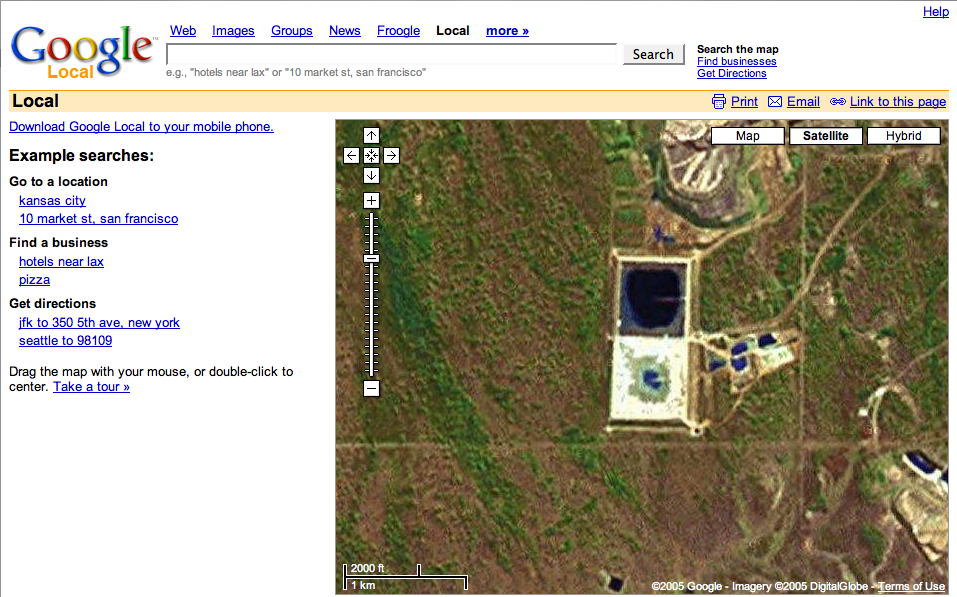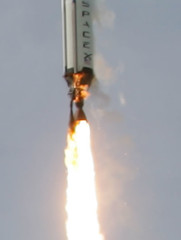A Hard Knock Life for Satellites
Friday, March 31st, 2006I’m probably giving away my age when I say this, but I remember when our television had a "rabbit ear" antenna, and adjusting the picture just meant moving the "ears" around. Later we had an antenna on the roof. Adjusting the picture meant someone had to climb a ladder to the roof, while someone else yelled out of a window until the picture was clear. Then there was cable. If we lost the signal, we called the cable company and waited.
Now we have satellite TV, and we rarely lose a the signal — except for occasionally during a storm, when it flickers on and off briefly before returning. If we have snow, it can interrupt the signal if it piles up on the dish, but that just means a quick trip to the back yard to brush it off. The dish in the back yard, however, is just a receiver; pointing at at a satellite so high up that a ladder on the roof doesn’t begin to do the trick. So, what happens if a satellite gets bonked by an asteroid or other random space junk?
Well, you lose the signal, which is what happened to a lot of Russians this week when a telecom satellite failed after a "sudden impact" shut down its thermal control, causing it to end up in space disposal orbit. (Yeah. I didn’t know what that meant either. Apparently there’s a whole part of space where satellites go to die. Who knew?) New Zealand had an outage too, due to loss of pointing control. (Another hard knock?) A European satellite got bonked in 1993 when the earth passed through a trail of comet dust.
So, what to do? Some people are trying to predict problems, and others are working on better materials. (What can withstand getting smacked by an asteroid?) And some are focusing on better monitoring and forecasting of sunspots and space weather (space weather?), which apparently can also cause problems for satellites.
I can’t say how it all works. I just hope it keeps working. I don’t want to miss any of my favorite shows, and I don’t want to have to climb any higher than the roof.
 "Brazil’s first astronaut blasted off from earth on a cloudless day on Thursday with a Russia-U.S. crew bound for the orbiting International Space Station,"
"Brazil’s first astronaut blasted off from earth on a cloudless day on Thursday with a Russia-U.S. crew bound for the orbiting International Space Station," 




 For the first time since 1972, the United States is planning to fly to the moon, but instead of a quick, Apollo-like visit, astronauts intend to build a permanent base and live there while they prepare what may be the most ambitious undertaking in history — putting human beings on Mars.
For the first time since 1972, the United States is planning to fly to the moon, but instead of a quick, Apollo-like visit, astronauts intend to build a permanent base and live there while they prepare what may be the most ambitious undertaking in history — putting human beings on Mars.
 The proof comes in the form of the innocent-looking SMART-Centre which, according to various reports, has assembled a consortium of more than 50 partners – including Japan’s Shimizu Corporation, US NASA contractor Orbitech and the UK’s Cranfield University – to turn the centre’s Dr. Niklas Järvstråt’s dreams of extraterrestrial conquest into reality.
The proof comes in the form of the innocent-looking SMART-Centre which, according to various reports, has assembled a consortium of more than 50 partners – including Japan’s Shimizu Corporation, US NASA contractor Orbitech and the UK’s Cranfield University – to turn the centre’s Dr. Niklas Järvstråt’s dreams of extraterrestrial conquest into reality.
 The
The 
